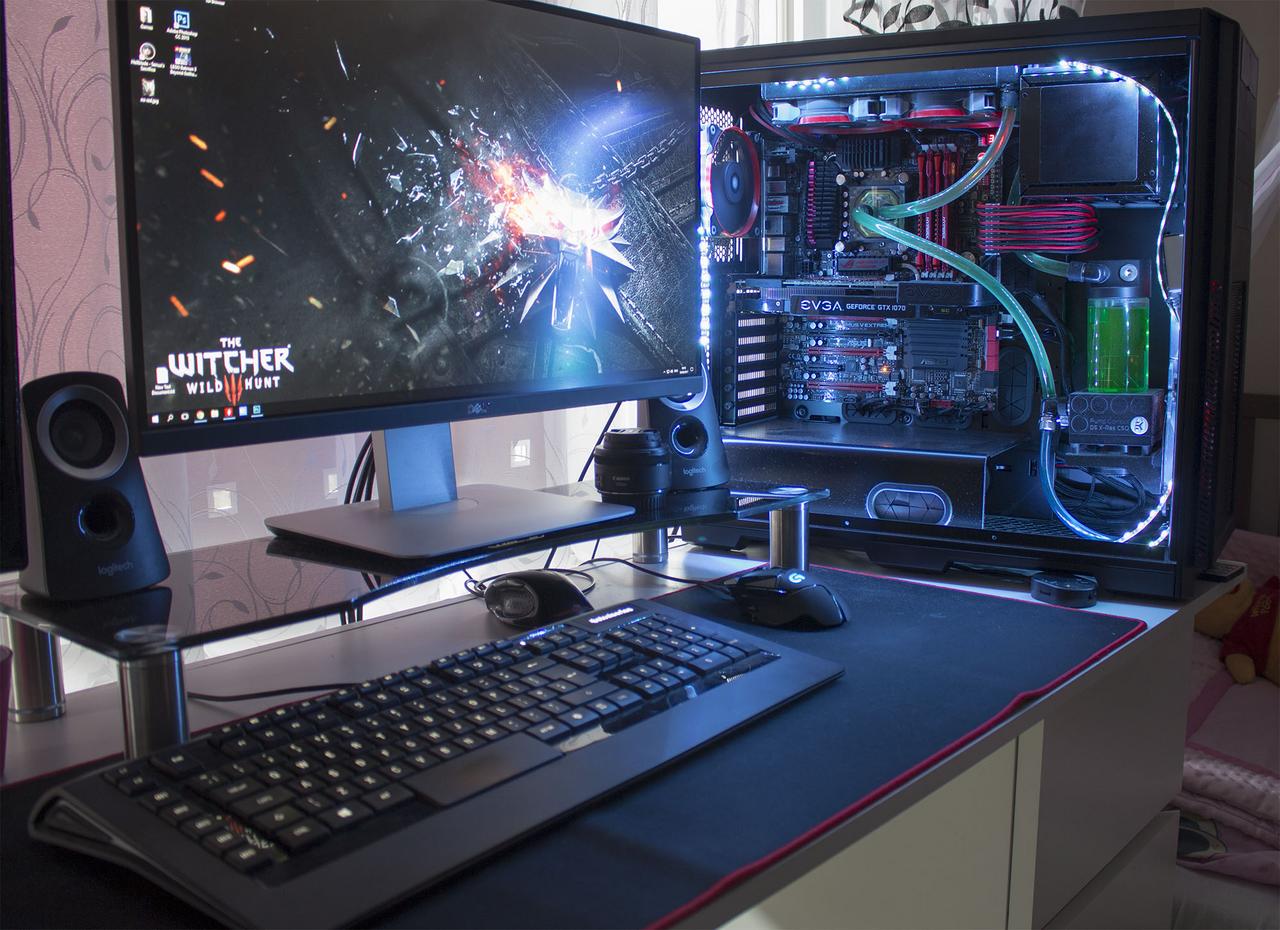
Vampire: The Masquerade – Bloodhunt is a F2P battle-royale game from Shark Mob AB. It was released last April 27, 2022, and has received positive reviews for its gameplay, unique characters, and gothic environment. If you plan to build a PC to be able to play this game, then you stumbled upon the right article.
Follow this guide on building a gaming PC for Vampire: The Masquerade – Bloodhunt:
- Check the PC requirements for Vampire: The Masquerade – Bloodhunt.
- Choose between an Intel i7-8700K or AMD Ryzen 5 3600X for your CPU.
- Install 16GB RAM for your PC build.
- Choose Nvidia GTX 1080 or Radeon RX Vega 64 for your graphics card.
- Download Microsoft DirectX Version 11.
- Install an SSD for your storage device.

1 – Check the PC requirements for Vampire: The Masquerade – Bloodhunt.
On its official Steam page, Vampire: The Masquerade – Bloodhunt has two lists of PC requirements: (1) minimum requirements and (2) recommended requirements. When building a PC for the game, it is best if you follow the recommended requirements. The list of recommended requirements has better hardware suggestions than the minimum. You may only use the minimum requirements if you wonder whether your current unit can run the game.
Here are the minimum and recommended requirements of the game:
Minimum System Requirements
- Operating System: Windows 10 64-bit
- Processor: Intel i5-7400 / AMD Ryzen 1300X or better
- RAM/Memory: 8GB RAM
- Graphics: Nvidia GTX 970/Radeon RX 580 or better
- DirectX: Version 11
- Network: Broadband Internet connection
- Storage: 20GB (HDD or SSD)
Recommended System Requirements
- Operating System: Windows 10 64-bit
- Processor: Intel i7-8700K / AMD Ryzen 5 3600X or better
- RAM/Memory: 16GB RAM
- Graphics: Nvidia GTX 1080/Radeon RX Vega 64 or better
- DirectX: Version 11
- Network: Broadband Internet connection
- Storage: 20GB (SSD)
2 – Choose between an Intel i7-8700K or AMD Ryzen 5 3600X for your CPU.
The processor is the central processing unit of your gaming PC. It is responsible for sending signals and instructions to your hardware components and devices. So it is crucial to choose the ideal CPU for your build. The recommended processors are Intel i7-8700K and Ryzen 5 3600X.
The Intel i7-8700K has a total of 6 cores and 12 threads. Its base frequency is 3.70 GHz but can be overclocked to 4.70 GHz using Intel Turbo Boost Technology. This processor also supports Intel Optane Memory Supported, Intel Hyper-Threading Technology, and Intel Transactional Synchronization Extensions.
The Ryzen 5 3600X, on the other hand, is a powerful processor for some serious gaming. It has a total of 6 CPU cores and 12 threads. This processor also has a base clock speed of 3.8 GHz, which can be boosted up to 4.4 GHz by overclocking. It is engineered to deliver ultra-fast 100+ FPS performance for the ultimate gaming experience.
3 – Install 16GB RAM for your PC build.
When it comes to RAM, the more RAM modules you install, the faster it can process your programs and load your operating system. When installing RAM, a rule of the thumb is to have at least 16GB when building a PC. However, if you want a gaming PC to play heavy-workload games such as next-gen video games, installing more RAM is best. A 24GB is an ideal RAM for a gaming PC build. However, if you have more budget, go for 32GB RAM.
Some of the best RAMs in the market include Corsair Vengeance, G.Skill Trident, Kingston HyperX, Adata Spectrix, Crucial Ballistix, etc.
4 – Choose Nvidia GTX 1080 or Radeon RX Vega 64 for your graphics card.
For its graphics card, the recommended system requirements suggest you use an Nvidia GTX 1080 or a Radeon RX Vega 64. The Nvidia GTX 1080 is powered by the NVIDIA Pascal architecture. It delivers up to 3x the performance of its previous-generation graphics card.
The Radeon RX Vega 64 is powered by the Vega architecture and is built for extreme gamers. It features AMD Radeon VR Ready Premium, AMD FreeSync Technology, and AMD Radeon Chill. It features a base frequency of 1247 MHz which can be boosted up to 1546 MHz by overclocking.
5 – Download Microsoft DirectX Version 11.
Microsoft DirectX is a series of applications that handle tasks related to multimedia. Microsoft DirectX Version 11 was released in June 2010, using current-generation machines’ latest video hardware features. The program uses a set of Windows components, which allows the software, especially games, to work with your video and audio hardware.
The Microsoft DirectX uses a multimedia accelerator, a feature built-in to your hardware to improve your overall multimedia experience. You can download the program on Microsoft’s official website. It supports Windows 7 operating system and up.
6 – Install an SSD for your storage device.
When it comes to the storage device of your gaming PC, it is strongly recommended in the system requirements to use an SSD. SSDs are a new generation of storage devices used in PCs, making them a better alternative option than HDDs. They use flash-based memory and are way faster than the traditional mechanical hard disk we all know.
For choosing an SSD for your gaming build, install a 500GB or 1TB SSD. This will provide more storage room for your operating system, applications, programs, and video games. Keep in mind that the latest games in the market typically use 20GB or above storage space.